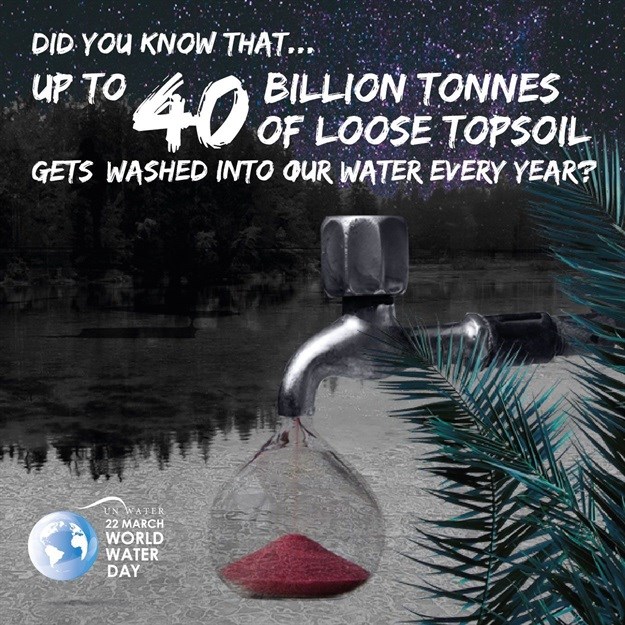
But what exactly are these nature-based approaches and what would they look like in a South African context? More importantly, are they a key element of doing things differently to deal with the particular set of challenges we face, or are they trivialities and First World luxuries that serve mainly to distract us from the real things that need to be done to ensure our future water security?
In short, nature-based solutions for water are those that draw on the range of services provided by ecosystems (including grasslands, forests, rivers and wetlands) that help us to manage our water better. In South Africa, for example, we have been able to quantify the ability of several natural wetlands to reduce pollution loads in the water flowing through them. Particular case studies include the wetlands immediately upstream of the Rietvlei Dam in Pretoria, the Klip River wetlands in southern Johannesburg and those in the intensively mined areas around eMalahleni-Witbank. When the water that has flowed through these wetlands is extracted for human use further downstream, the costs of treating it are lower than they would have been had these wetlands not been present to provide this service.
A project funded by the Water Research Commission has almost finished refining the boundaries of a set of strategic water source areas – the 8% of the surface area of South Africa, Swaziland and Lesotho that is responsible for generating 50% of the water in our rivers. These “water factories”, many of which are mountain catchments, are essential areas of ecological infrastructure in which we need to make careful choices about land use if we are to sustain the groundwater and surface water benefits they provide.

Government is currently investing heavily in restoring landscapes and influencing land use practices upstream of the proposed Ntabelanga Dam in the Eastern Cape, recognising that sediment originating from these eroding landscapes is a risk to the expensive new infrastructure being planned downstream. Emphasis is being placed on keeping ecosystems from degrading, and restoring those that are degraded, in order to minimise erosion and trap sediment before it reaches the rivers. It is as much about keeping soil where it belongs, as it is about keeping excessive amounts from contaminating water resources. Reducing sediment inflows into the dam is less costly and has a range of other benefits, as opposed to trying to manage the sediment once it enters the dam. Without such a nature-based investment in the catchments upstream of the dam, this sediment would otherwise reduce the water quality, storage capacity and economic lifespan of the dam.
The notion of working with nature, rather than viewing it as an inconvenience or hazard to be overcome and subordinated, is not new. What is new is the extent to which this approach is entering the global mainstream, as its showcasing through World Water Day 2018 clearly testifies. Seeing ecosystems and the water-related benefits they provide as a form of infrastructure is largely a matter of reframing what we understand by the term ‘infrastructure’. It also implies that, just as we need to make financial provision for maintenance and operation of built infrastructure, we need to do the same for its natural equivalents if we are to continue enjoying their benefits. In fact, the National Water Resource Strategy produced in 2013 by the Department of Water and Sanitation clearly considers green (natural) and grey (built) infrastructure as mutually supportive elements of an integrated approach to managing water.
This is not to say that we should not continue to invest heavily in the traditional conception of water infrastructure, such as dams, water treatment plants and inter-basin transfers. Such infrastructure will continue to be vital for providing water to large populations and nature-based solutions are not being put forward as the alternative that can substitute for concrete and steel. Instead, we are increasingly learning that the answer lies in a blend of the two, recognising the potential role of nature-based solutions to supplement and sustain built infrastructure solutions for water resource management.
This blend is particularly relevant as we begin to acknowledge the “new normal” that our water governance, planning and operational systems must adjust to. Water planners and managers are increasingly confronted with a range of drivers of change that influence water resources, including climate change. Compounding this is the uncertainty that comes with complex systems undergoing change, where imperfect information upon which to base decisions is the norm.

In such situations we need water governance capacity that enables us to rapidly learn, respond and adapt to uncertainty, variability and change. As we are discovering, the costs of not doing so can be immense. In the process we are learning that reliance on the green as well as the grey should be an indispensable element of how we build our water resilience.
The central ideas covered in this article are being further developed in a newly-initiated multi-partner project led by the Development Bank of Southern Africa and the South African National Biodiversity Institute, with funding from the Global Environment Facility. Over the next five years, the project will work across sectors to enhance and sustain the fledgling systemic changes already underway to integrate grey and green for water. It will also generate measurable, replicable examples of success that give effect to the spirit of World Water Day 2018 and its expression in national policy. We will be sharing the learning that happens through this project, as it emerges.